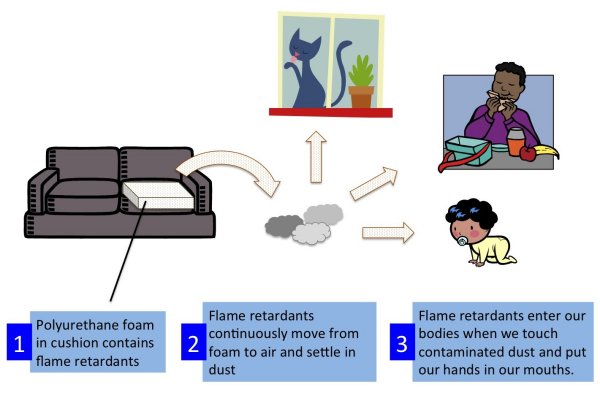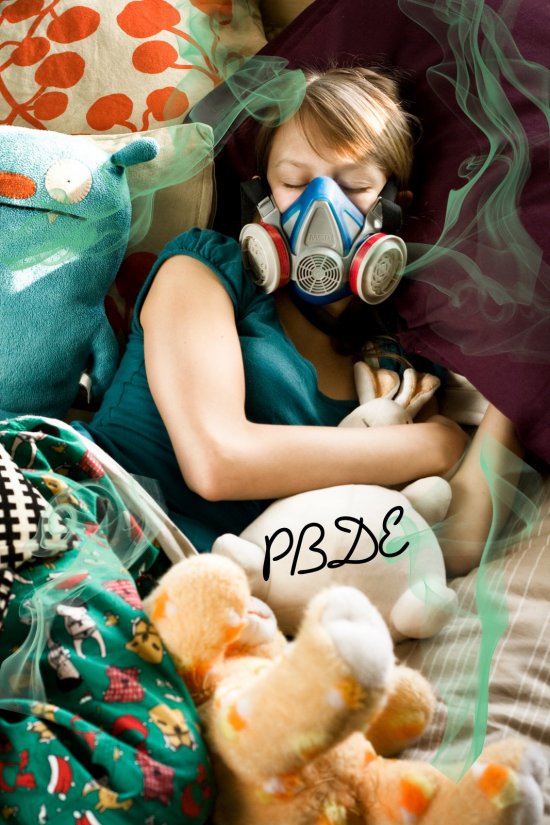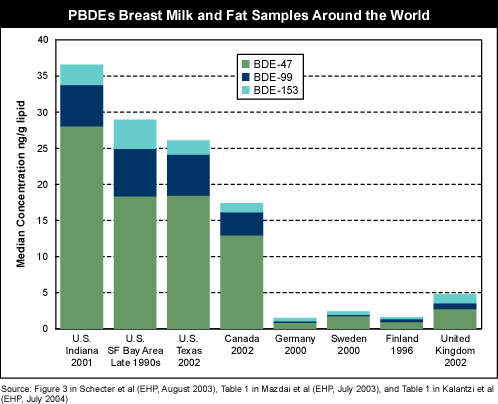Parent Warning: Developmental Delays Linked to Flame Retardants
Wow! This is one piece of scary news. A study published in November in the journal Environmental Health Perspectives has linked prenatal and childhood exposure to flame retardant chemicals to certain neuro developmental delays. Yikes! I thought flame retardant products were supposed to keep our children safe, not harm them… The study research was done at University of California’s Berkeley School of Public Health, so I tend to take their findings seriously.
Here’s what they found – exposed children were found to have increased likelihood of fine motor coordination problems, poor attention spans and overall IQ. Berkeley’s research centered on PBDEs – polybrominated diphenyl ethers – which are known as persistent endocrine-disrupting compounds. These compounds leach out of the materials they are found in and are inhaled through normal everyday dust. Children and gestating women can ingest loads of these damaging chemicals depending on how many flame retardant products you have in your home. And who doesn’t have lots? Here’s what you need to know:
What Products Contain PBDEs?
PBDEs are found in computers, television sets, mobile phones, electronics, electrical items and automotive equipment. In these types of devices they are used in insulation around wires. Also containing PBDEs are construction materials, polyurethane foam mattresses, cushions, carpets, upholstered furniture and curtains. According to healthychild.org, dangerous PBDEs can total up to 30% of a product’s weight. Imagine 1/3 of the sofa your child is sitting on being made up of a chemical compound that can cause neuro developmental delays in your child. My son likes to nap on our couch. He lies there, face down (he’s 10) breathing in heaven knows what. That is terrifying.
What Damage Can PBDEs Cause?
Naturally we’re very concerned about the damage these compounds can do to our children, but it’s important to know they’re not good for anyone. If swallowed, inhaled or absorbed through the skin, PBDEs can be somewhat toxic (not keel over and die toxic, but still toxic). But it’s not these toxic short term effects that are really disturbing, it’s the long term issues that scare me and should scare any parent. PBDEs are neurotoxins that can damage the central nervous system and brain. PBDEs are also suspected to disrupt endocrine production and may mimic or impede hormones. That’s not good for anyone.
PBDEs can cause fertility problems, cross the placenta barrier and reach the developing fetus and do the same damage listed above as well as interfere with fetal brain development. And once born, PBDE is expressed in breast milk, so the exposure continues while you are doing something you think is healthy for your baby. Finally, because PBDEs accumulate in your fat cells and can linger for years, mothers can have a significant amount of these harmful compounds in their bodies that they can then pass along to their unborn children across the placenta as well as in breast milk. This can lead to all sorts of complications and developmental disorders – this underscores the need for developmental assessments by your pediatrician to allow for early diagnosis and intervention.
What Did This Study Find?
Study authors Brenda Eskenazi, Jennifer Maxwell and Brian Maxwell said, “We measured PBDEs both in the mothers during pregnancy and in the children themselves. It shows that there is a relationship of in utero and childhood levels to decrements in fine motor function, attention and IQ.” Up to 97% of Americans have PBDEs in their blood and if you live in California, you will have a level twice the national average because California implemented a tougher standard on flammability of furnishings.
Heather Stapleton, a Duke University professor and expert on the effects of exposure to flame retardant chemicals said, “This new study is very important because it confirms earlier published research on the neurodevelopmental effects of PBDE exposure” and added,”Within the range of PBDE exposure levels, 5 percent of the U.S. population has very high exposure levels, so the health impact on children in these extremes could be even more significant.”
How Can You Protect Your Children from PBDEs?
There are different formulations of PBDEs and older furniture will have the more toxic versions. Furniture made after 2005 is less likely to contain PBDEs. If you have an older sofa, replacing it is a good way to cut down on exposure from an everyday item your children can’t avoid. Older mattresses should be replaced or encased in protective fabric. Anything – from child safety seats to car upholstery to pillows with rips where you can see foam should be replaced or repaired immediately.
Use a vacuum with a HEPA filter to trap dust particles that may have PBDEs “attached” to them. Old foam furniture should be replaced rather than reupholstered to remove the risk from your home. When replacing carpet, make sure to protect yourself from touching it – it likely has PBDEs. Thoroughly vacuum and mop after getting rid of the old carpet to minimize the amount of leftover PBDEs.
When buying new furniture, research the brands to be sure they no longer use PBDEs. When replacing electrical items, look for these brands which have committed to not use this type of flame retardants: Acer, Apple, Eizo Nanao, LG, Lenovo, Matsushita, Microsoft, Nokia, Phillips, Samsung, Sharp, Sony-Ericsson and Toshiba. Check out this guide on how to avoid PBDEs.






